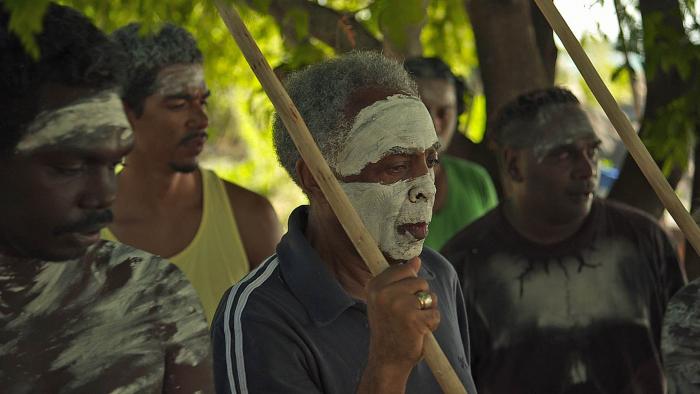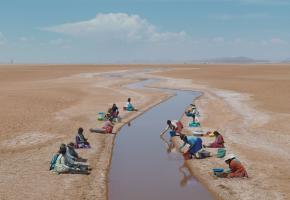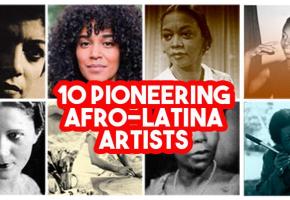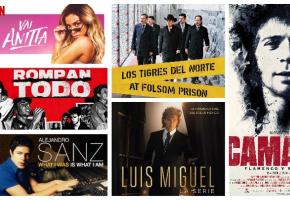
Travelling Heart
The new film Viramundo follows legendary Brazilian singer-songwriter Gilberto Gil on a musical journey from Bahia, Brazil to Australia, South Africa, and back to the Brazilian Amazon. It had its UK premier at Barbican in late July this summer. Ethnomusicologist Frederick Moehn (King’s College London) discusses the film with its director Pierre-Yves Borgeaud.
by Frederick Moehn
Image

Gilberto Gil is one of the greats of Brazilian popular song. He was a leading figure in the now legendary Tropicália artistic movement of the late 1960s. At the time, he and fellow Tropicalist Caetano Veloso drew the attention of the military dictatorship that controlled Brazil. Gil was briefly imprisoned before taking exile in London with Caetano for two years (1969-71).
After returning to Brazil, Gil continued to forge an astonishingly productive and influential career in music. Aside from being a tremendously prolific songwriter, singer, and guitarist, he has been an environmental and social activist, as well as a politician. He was first elected to local office in his home state of Bahia in 1987. He joined the Green Party in 1990. Later, as Culture Minister under president Lula da Silva from 2003-08, Gil developed ambitious and innovative policies for democratizing access to digital culture. One program was to establish numerous ‘Culture Points’ throughout Brazil where the federal government gave creative youths computer equipment and access to open source software and the Internet for use in building on existing localized cultural practices, and for connecting with other points and other cultural actors.
In Viramundo the 71-year-old Gil travels from Brazil to two other countries in the Southern Hemisphere that were colonized by different European powers, and where non-Europeans were subjugated to white rule. The film does not explicitly advance a specific political message; rather, according to director Pierre-Yves Borgeaud, the aim of the film is to explore the role music might play in breaking down established ideas about center and periphery, or North and South, and how music can mediate problems of racial discrimination. A viewer lacking sympathy for this sentiment, Pierre-Yves conceded, may not enjoy the film as much as those who do.
Gil’s first words in the documentary, from a discussion with youths in Bahia, are: ‘The process of raciliazation is complex. We need to get away from Manichean discourses that characterized the struggles of the past’. An early scene has Gil sitting outside of a humble home in Bahia singing his contemplative reggae-grooved, ‘A Raça Humana’ (The Human Race): ‘The human race is one week of God’s work / The human race is an open wound, a beauty, a rottenness / Eternal flame and death, death and resurrection’.
The title Viramundo plays on the words ‘virar’ (turn, or change) and ‘mundo’. The film does not didactically explain all of the different contexts, and some of the information it offers may be lost on viewers who do not already know something about, for example, Carnival in Bahia, or the Australian Aboriginal cosmological concept of Dreamtime, which is mentioned in a rap song, or the band Midnight Oil, whose lead singer Peter Garret abandoned music and is now Minister of Education in Australia. Instead of explaining, Borgeaud allows the musical performances to drive the narrative, to tell a story. My appreciation of Viramundo was much augmented by the discussion I had with the director about it on 22 August.
FM: Your last film was about the Senegalese musician Youssou N’Dour, so you’ve already done a film about a giant of world music. Are there other films that you did about music or musicians?
PB: Yes, a lot. I worked in New York with Bill Laswell, for example, and I worked with Manfred Eicher at ECM Records, doing the videos for the recording label. I also did a documentary about Swiss musicians in New York.
FM: Are you a musician as well?
PB: Yes, I am a drummer and recorded some CDs. I still consider myself a musician.
I try to use the image as a musical tool somehow. As a drummer I was very frustrated that I wasn’t composing. And now that I’m doing the editing and the whole conception of each film, I don’t have this frustration anymore. What is interesting with Youssou and Gil and every musician I work with is that they consider me a member of the band somehow. I think it is because in a way we are doing the same thing.
FM: Your film about N’Dour, Return to Gorée (2007), followed the singer on a journey that explored connections between jazz music and the slave trade to the U.S. Was the producer for Viramundo the same as for that film?
PB: The initial idea for Viramundo was from Emmanuel Gétaz, one of the co-producers for Return to Gorée. He asked me to make Viramundo because Gilberto Gil and Flora, Gil’s wife, really liked Return to Gorée and they wanted to make the same kind of film with Gil. So Gétaz wanted me as director and we used the same crew as for the N’Dour film. Obviously we cannot make Return to Gorée II, like a sequel. Instead, we wanted to explore more the postcolonialism, to go from the slave trade and to talk about the post-, new, next colonization. But also, the question of skin colour and racism: how the effect of the slave trade still exists now in the attitude that just because people are different colours they are not treated the same.
FM: Was it intended to make a clearly articulated statement? Did you talk about that with Gil?
PB: We had many discussions before shooting. We met in Portugal, in Rio, in France, several times before making the film. It was about getting in tune, talking about the values. But we did not discuss specific issues or things to be said. I think the common thing is the importance of music and songs to form and inform people: the music as an example or a possibility for a better world. But you don’t even have to formulate it once you are with people who know that you know that they know.
If there was an intention on our side, it was that it was also a kind of game. We were not going to tell Gil whom he was going to meet. The idea was, ‘OK, now you’ll meet so-and-so and we’ll see what can happen’. You know, to have some real live interactions and not to be prepared like a minister. But this setting failed somehow because it is impossible to surprise Gil. He is too open, too receptive. He’s too ready for the unknown. He welcomes the unknown. Everything: even the sad things, the beautiful things. He’s the definition of open. So he cannot be surprised or shocked.
FM: Is it difficult when you have somebody who is so big, like Gil, and you can’t tell the whole story of his life. How do you get across the sense that he’s a legend, but this is still a new journey for him?
PB: We decided to shoot and make a film in the present, of Gilberto Gil now. That was one major choice: not to use archival footage, and not to talk about fifty years of a career that is very rich politically, musically, ecologically – he was too big for the picture. So we decided to frame it by only taking Gilberto Gil in the present, and to see what could be the resonances of the past, or of what he had done previously – such as the Culture Points – in the present, while he is traveling and meeting people. This was a challenge because you don’t have unlimited time for the filming. You only have a few days. With Gil or with Youssou N’Dour they are busy like an ex- or future minister. Because you know Youssou N’Dour is a minister now in Senegal! He became a minister after the film. But what I’m saying is that this is a very uncomfortable fact for me as a director: that the time is running, especially in Bahia, during carnival, working with a guy like Gil, wow – it’s really very difficult!
FM: A lot of people want to spend time with him.
PB: Yeah!
FM: So the Filhos de Gandhi parade scene is from Carnival?
PB: The middle of Carnival! Olodum, Ilê Aiyê, and Filhos de Gandhi are three of the main blocos (street parades), and Filhos de Gandhi is really the peak of Carnival. So the minister is busy as the ‘King of Bahia’ during Carnival.
FM: How did you choose the destinations that Gil travelled to for the film?
PB: That was the given element by the producer. The producer wanted to make the film with Gil, and to go in those places: Brazil, South Africa, and Australia, specifically to Aboriginal territory in Australia. It’s all based around colonization: to go to places where there are different status quos on the question of the effect that postcolonialism has had on the relation between blacks and whites, or on indigenous populations. The fact that it’s those specific countries in the southern hemisphere also comes from Gil’s vision – which is related to his Culture Points policies – of breaking this conception of the center and the periphery. It’s also related to the title, Viramundo, to change the vision of the world. We decided to go to that specific place in Australia, Yirrkala, in Arnheim Land in the Northern Territory, because it’s the most remote in terms of access to the Internet, and because there is a program in place there to give the tools of computers and the Internet to the Aboriginals.
FM: Do you think that we too often want music to solve the worlds’ problems?
PB: No, we want music to entertain! People are not taking the music seriously; it’s really a way to get entertained.
FM: I really liked the Aboriginal singer Rrawun Maymuru, who appears with his band, and also singing around the campfire. He has a really nice way of singing.
PB: Yes, he is getting bigger and bigger now. I encountered him when I was scouting for a location. I wanted to work with Gurrumul but he is very difficult to reach, so I was looking for other people. That’s how I found Rrawun. He had been playing in a garage before and, after some heavy existential difficulties he came back to the music with the help of his people. He was just starting the new band when I was scouting for location, and now if you go on the Internet you’ll see that he’s on his way. It’s beautiful. He’s writing songs for Gurrumul also.
FM: Interestingly, given Gil’s interest in technology, the music in the film was mostly acoustic.
PB: The whole concept is that the music is live, it’s played there, in the present, in front of you. It’s kind of a rule for me. Everything that we hear, every note is played live, and you see the origin of the sound. It’s very important to have the presence of the musical act. So you are with the musician, next to the musician. You are totally into the music. Same with the mix, with the sound design: it’s really realistic, even the mistakes are there, the human qualities of the music. So when you have this aesthetic with good sound in the theatre, it’s really another experience. If you only take the cinematographic aspect of the film and you just take the music as Brazilian music to drink cocktails, or you disconnect your brain once Gilberto Gil is playing some music, then the film is nothing, it falls apart. The point is to experience the sound, and to consider how music can change conceptions of North and South, high and low, and how it can give possibilities for a more balanced world.
Viramundo: A musical journey with Gilberto Gil. Directed by Pierre-Yves Borgeaud. Produced by Dreampixies, Emmanuel Gétaz and Urban Factory, Frédéric Corvez and Clément Duboin.
At present, UK residents can view the film online as a streaming rental at the Guardian film room: http://muvi.es/w4620/174189.
The film will have its Brazilian premier at the Rio Film Festival (Festival do Rio 2013, 26 Sept.-10 Oct.)
A DVD of the film should become available for purchase by the end of 2013. For more information, see http://www.viramundo-film.com















